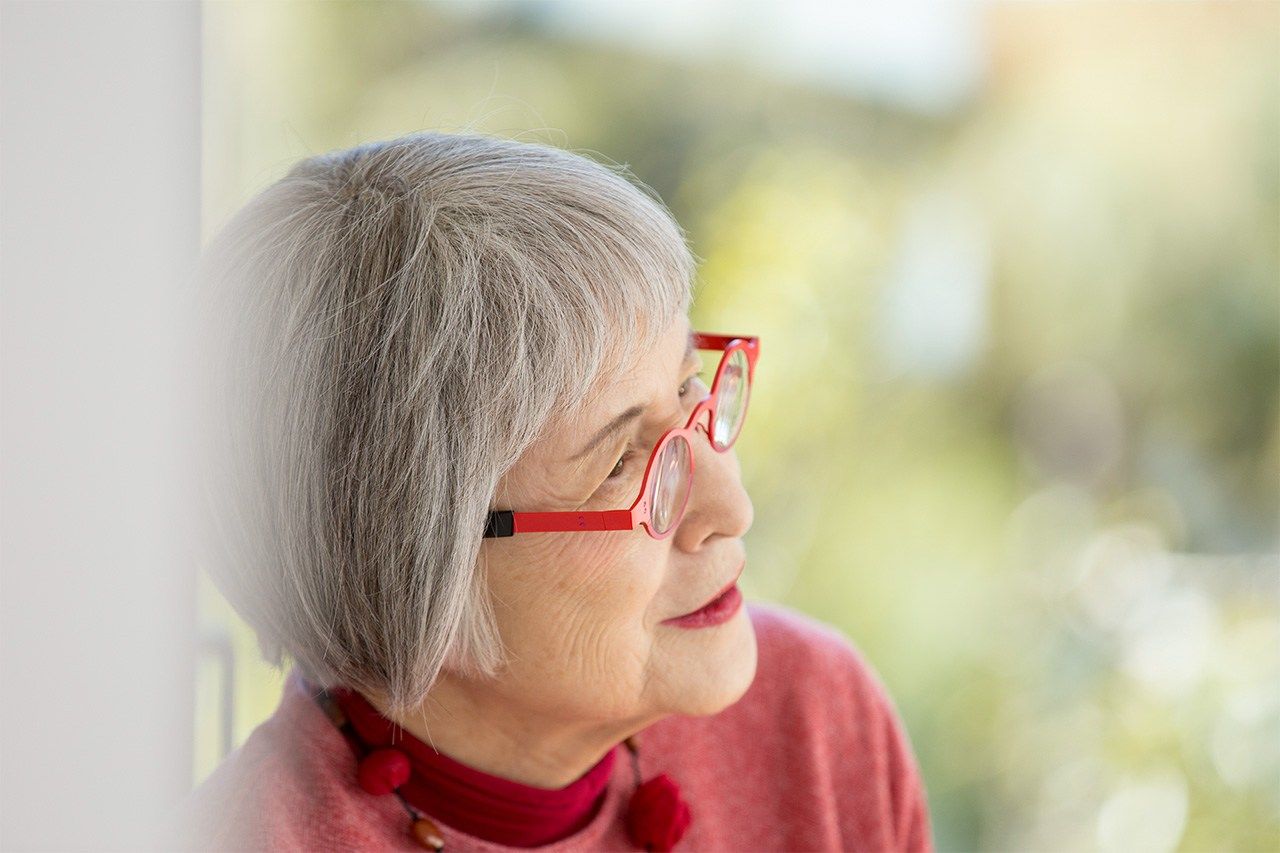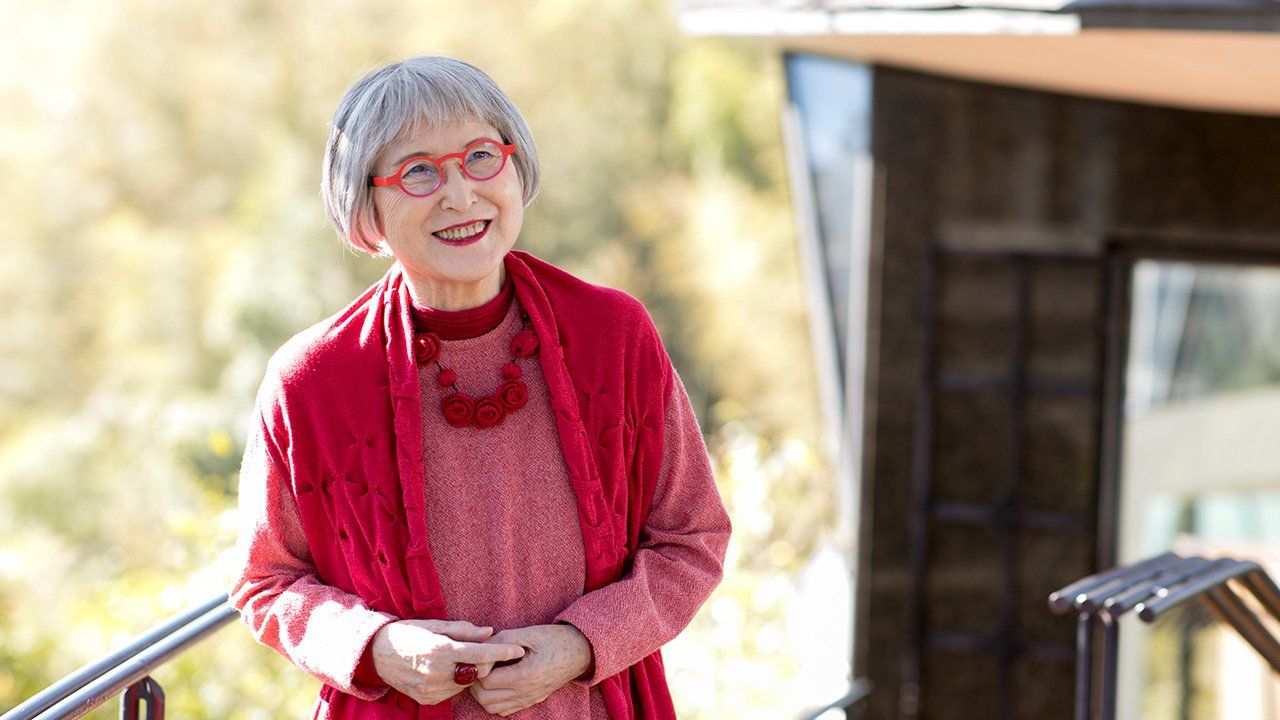
The Joy of Imagination: Kadono Eiko, Creator of Kiki’s Delivery Service
Culture Books Education- English
- 日本語
- 简体字
- 繁體字
- Français
- Español
- العربية
- Русский
Kadono Eiko lives in the historic town of Kamakura in Kanagawa Prefecture, in the hills overlooking the Pacific Ocean. Over the course of her long career, she has published more than 200 books, including picture books, children’s stories, translations, and essays. Of all her works, the best known are the Chiisa na Obake Atchi, Kotchi, Sotchi (Little Ghosts, There, Here and Where) series and the children's novel Majo no takkyūbin (Kiki's Delivery Service) about a young witch-in-training, which inspired one of Miyazaki Hayao’s beloved anime films.
In 2018, she received the Hans Christian Andersen Award for Writing, the world’s most prestigious award for children’s literature. Next year will mark 50 years since her first book, Ruijinnyo shōnen, Burajiru o tazunete (Brazil and My Friend Luizinho). For the last four years, she has held popular monthly public readings, drawing enthusiastic audiences made up of fans from all generations. A museum dedicated to her work and children’s literature in general is set to open in Edogawa, Tokyo, in 2022. We met at a café surrounded by woodland in the hills above Kamakura to hear the secrets of Kadono’s magical ability to weave new stories and the apparently inexhaustible source of her inspiration.
The Original Idea for Kiki
Kiki’s Delivery Service is a series of stories about a girl called Kiki, the only child of a mother (who is a witch) and a father (who is not). When she turns 13, she leaves home and begins her apprenticeship in magic.
Kadono got the idea for the stories from pictures her daughter Rio drew when she was 12, featuring a witch on a broomstick. A radio hung from the broomstick, with musical notes emerging from it. The drawing sparked Kadono’s imagination. “I thought it might be fun to write a story about a witch who flies around on her broomstick, listening to the radio,” she says. She remembered photographs she had seen in Life magazine as a teenager, showing a bird’s-eye view of New York from the air. “I thought, if I write a story about a witch, it will be as if I am flying too!”
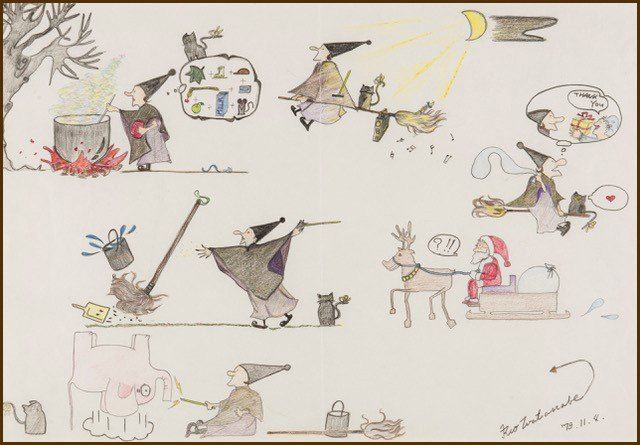
The original inspiration for Kiki came from these pictures, drawn by Kadono’s daughter Rio when she was 12 years old. (Photo courtesy of Kadono Eiko’s office)
Kadono herself had a difficult childhood. She lost her mother when she was just five, and remembers being a tearful child in her early years. The confusion about where her mother had gone sparked fascination in invisible worlds and things we can’t see. “I began to imagine there was somewhere I could go where things would be better. And once I learned to read, I found it: I escaped into the world of books.”
Investing her narrative with memories of her own life as a young girl, a story naturally began to take shape in which Kiki would go off and live on her own. Kiki is 12 when the story opens, on the cusp of adolescence. “It’s a difficult age to depict—but an interesting one, I thought.” Flying through the skies on her magic broomstick, young Kiki rises to the numerous challenges of running an airborne delivery service, transporting everything from a bridal veil to a sick hippo. As the story develops over the course of six books, she experiences jealousy, sadness, and setbacks. She eventually finds love, gets married, and gives birth to twins.
Two things Kadono was sure of from the outset. “First, there was only going to be one kind of magic. So for Kiki, her magic ability is that she can fly—but that’s it. Another thing was the question of why boys couldn’t become witches. I ended up writing six books, taking the story up to when Kiki gets married and has twins—a boy and a girl.”
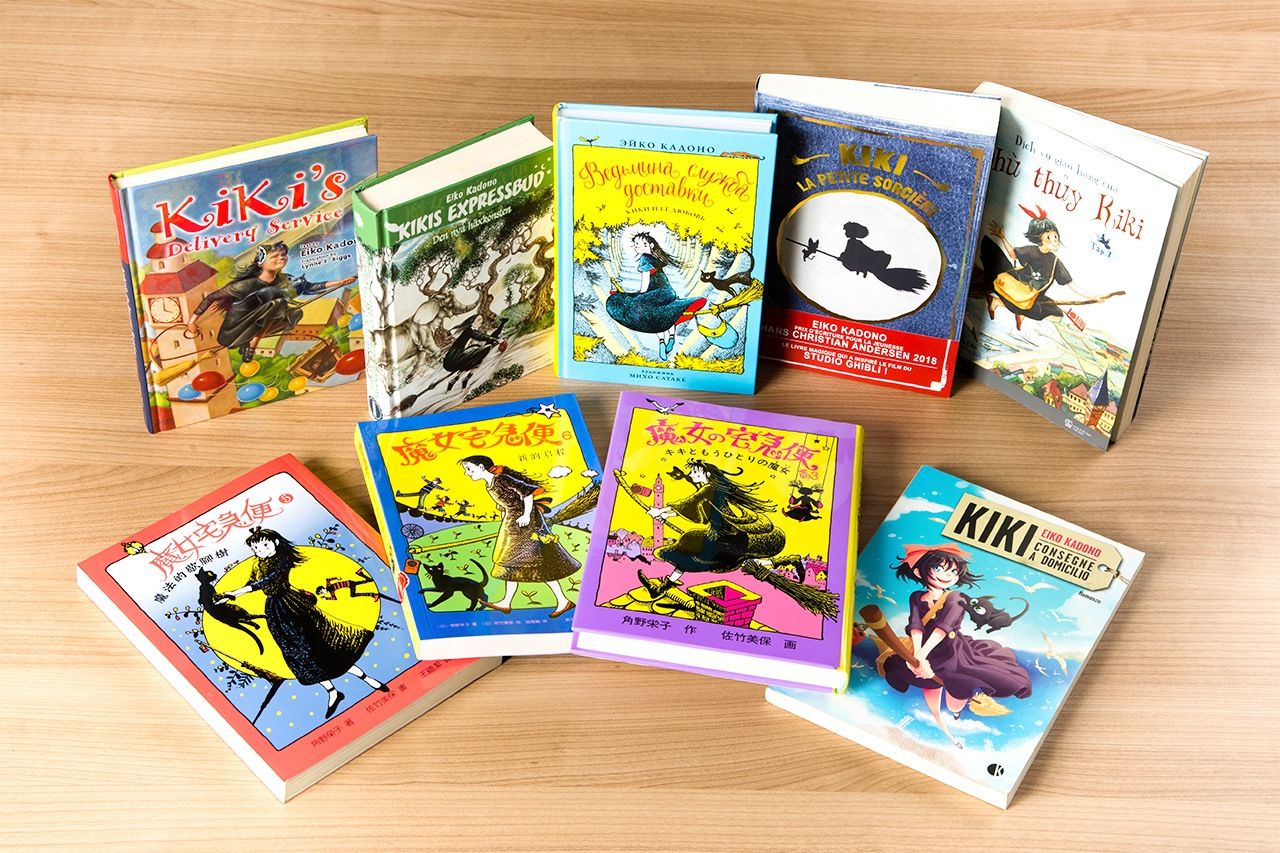
Kiki’s Delivery Service has been translated into 13 languages, including Thai, Vietnamese, French, Swedish, Russian, and Italian. In 2020, there are plans for a new English translation, as well as versions in Spanish and Romanian. (With thanks to Fukuinkan Shoten Publishers)
The first volume was published in 1985. Four years later, a feature-length anime version was released, directed by Miyazaki Hayao and his Studio Ghibli. By 2009, the Kiki series comprised six volumes. Two spin-off stories later followed.
“Everyone Has at Least One Magic Power”
As I was writing, I started to think: ‘Doesn’t everyone have their own special magic?’” she says with a smile. Kadono says that a sense of curiosity is vital to unlocking the magic within us. “When your curiosity is piqued, you start to open your eyes to the world around you. You find the seeds of interest in something. And as you keep at it, your world expands. And the more you look, the more you find—the deeper you go, the wider the horizons.
“It has to start from something personal,” Kadono says. “You might jot something down in a secret notebook, write down how you feel at that moment. It could be a picture. It could even be something mean about a person who has ticked you off. In fact, that can often lead to great things, if it’s done well!”
One of Kadono’s books is a picture book called Warukuchi shimaimasu (Put Away Your Bad Mouth) A girl comes home after being picked on at school, and unleashes a barrage of complaints at her mother. Her mother brings out a hatbox and tells her: “Spit it all out into this box.” But the girl has so much to say that they can’t fit the lid back on again. Kadono says she was apprehensive about presenting this story at her public readings, but it proved to be one of her most popular stories to date. She found that children were clutching their sides with laughter. “Children see what’s going on around them. And they have plenty to say, even if they don’t always express it.”
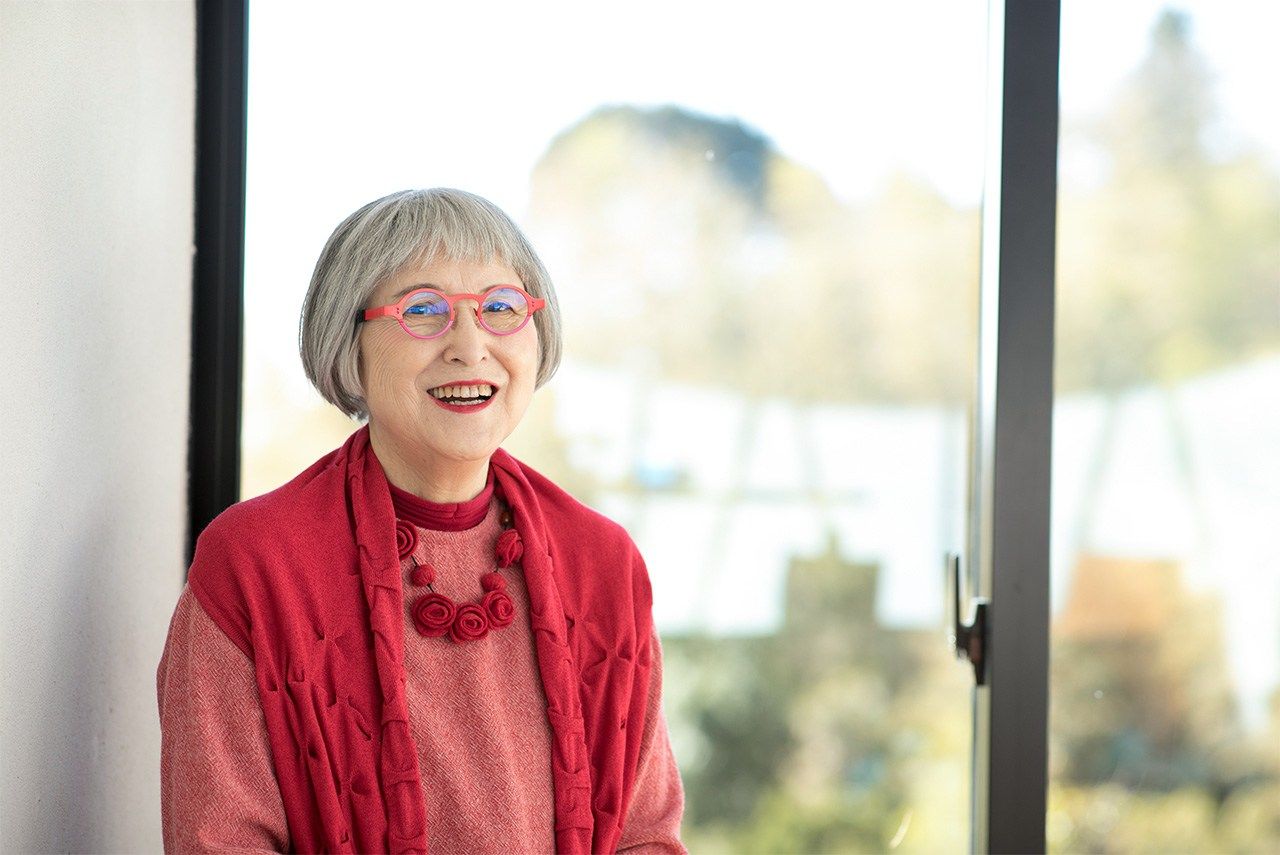
Kadono responded to our request that she dress in bright clothes by picking out this wonderful strawberry-colored ensemble.
From Imagination to Creativity
“It’s emotional responses to experience that nurture our individual magic,” Kadono says. “As you go through life, you find things that spark your interest. It could be flowers, seeds, anything. It’s important to value these interests and enjoy the excitement of discovery. That sense of curiosity contains the seeds of your own magic power. You have to nurture it and look after it carefully.” The magic born of curiosity and excitement can become a source of strength in life, she says. “You become good at things you enjoy. You can never really put your heart into something unless you enjoy it.”
Of course, it would be wrong to go through life without considering the people and things around you—but you shouldn’t just copy other people, either. It’s important to see and think for yourself, to make your own decisions and act on them. Kadono believes that the imagination has a crucial role to play in shaping a person’s life. “Compare a person to a tree. The imagination is the food the tree needs to help it grow. Our imaginations inspire us. Imagination and excitement are what drives our hearts and minds. And when we are moved, imagination becomes creativity.” Imagination also comes in useful when communicating with people from a different cultural or linguistic background.
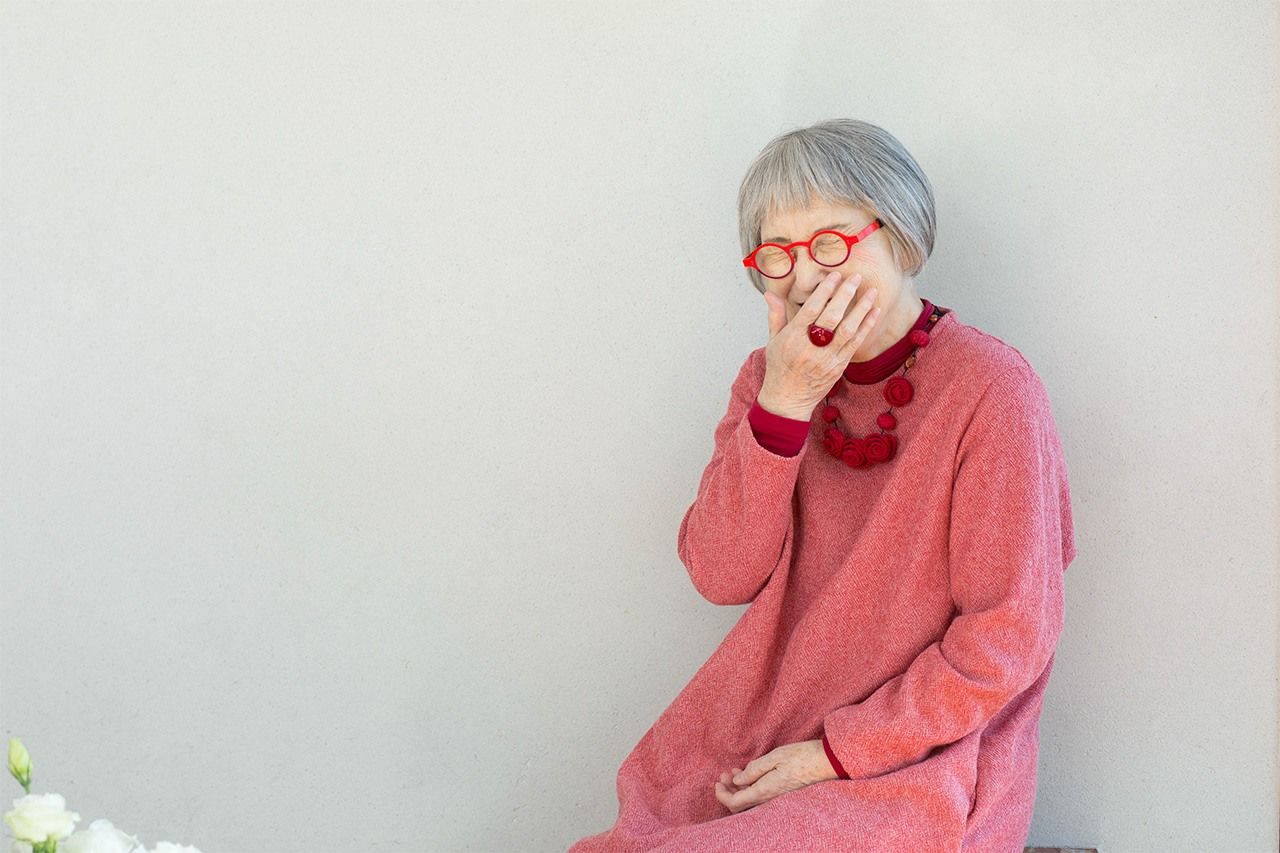
“It’s never too late to find something you’re really interested in.”
Who Takes the Credit for the Things We Make?
From time to time, odd snatches of dialogue in the Kiki series seem to contain messages directly from the author. At one stage, Kiki’s mother tells her: “It’s wrong to talk about making things as if you’re the one doing all the work. You’re not really making anything on your own, you know.”
Kadono explains: “People often think they have made something on their own, that they have completed it themselves, but that’s not really true.” In ancient times, the only way people could carry water was by using leaves and their own hands to scoop it up. But if you needed to bring water to a sick child, you would look for a better way to carry more water without spilling it. This need provided the imaginative spark that led people to invent various types of containers and cups. Even the electronic devices and information technology we enjoy today are the result of inspiration received from the invisible world of the imagination, Kadono says. “I remember the days when people used to cook rice on wood-burning stoves, so I understand all the dreams that went into the invention of the electric rice cookers we use today,” she says.
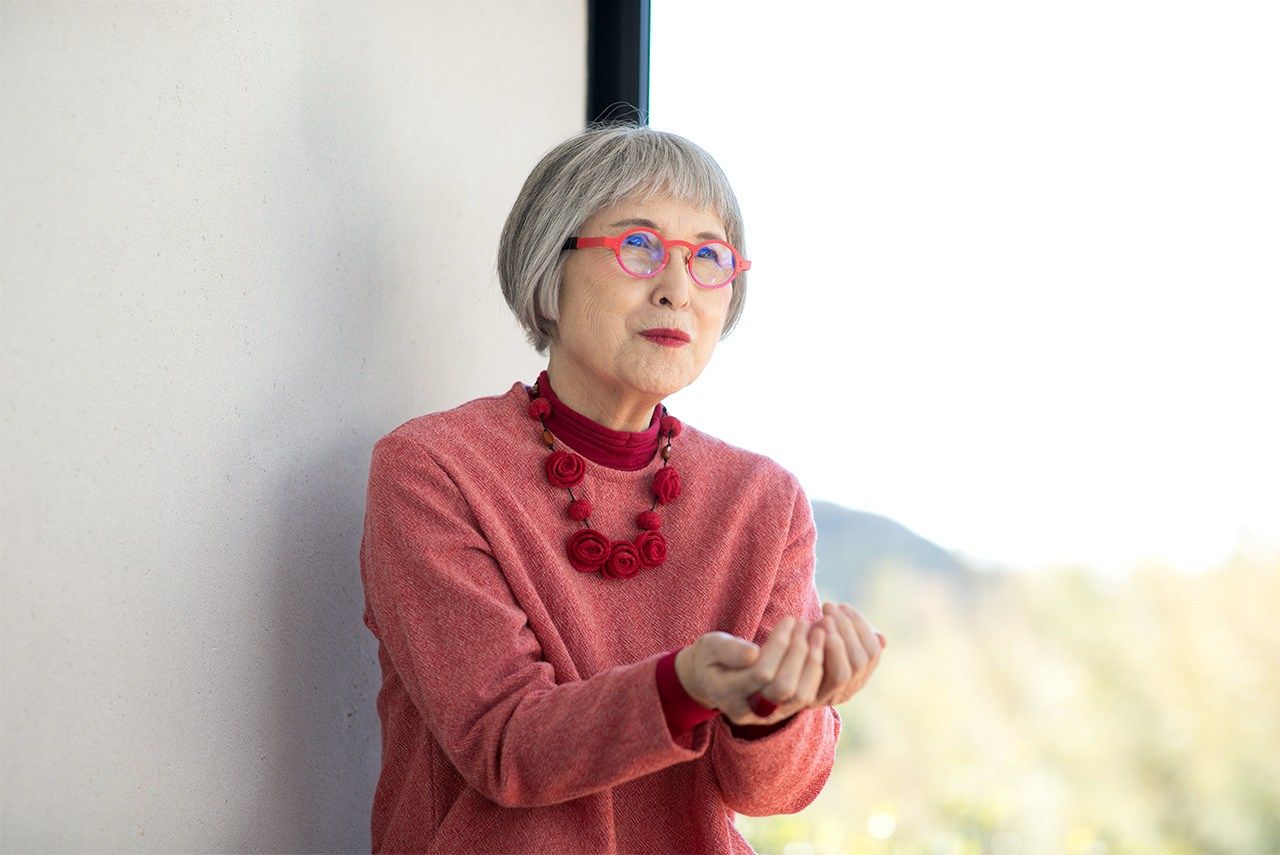
“You can’t bring water to sick children just by scooping it up in your hands.”
Childhood memories
Kadono was born in 1935 in Fukagawa in the heart of the old shitamachi—the “low town” along the rivers in the east of Tokyo—and was evacuated to Yamagata Prefecture during the war. Stories helped ease her loneliness and pain after she lost her mother. She remembers sitting spellbound on her father’s knee as a child. “He was obsessed with Les Misérables, a tale that had captivated him since he was a boy. He used to sit me on his lap and tell me stories about Jean Valjean. He used to act out the parts and use lots of vivid, onomatopoeic language to make the story come to life. The stories were quite different from the original, I suppose, but I loved hearing them.”
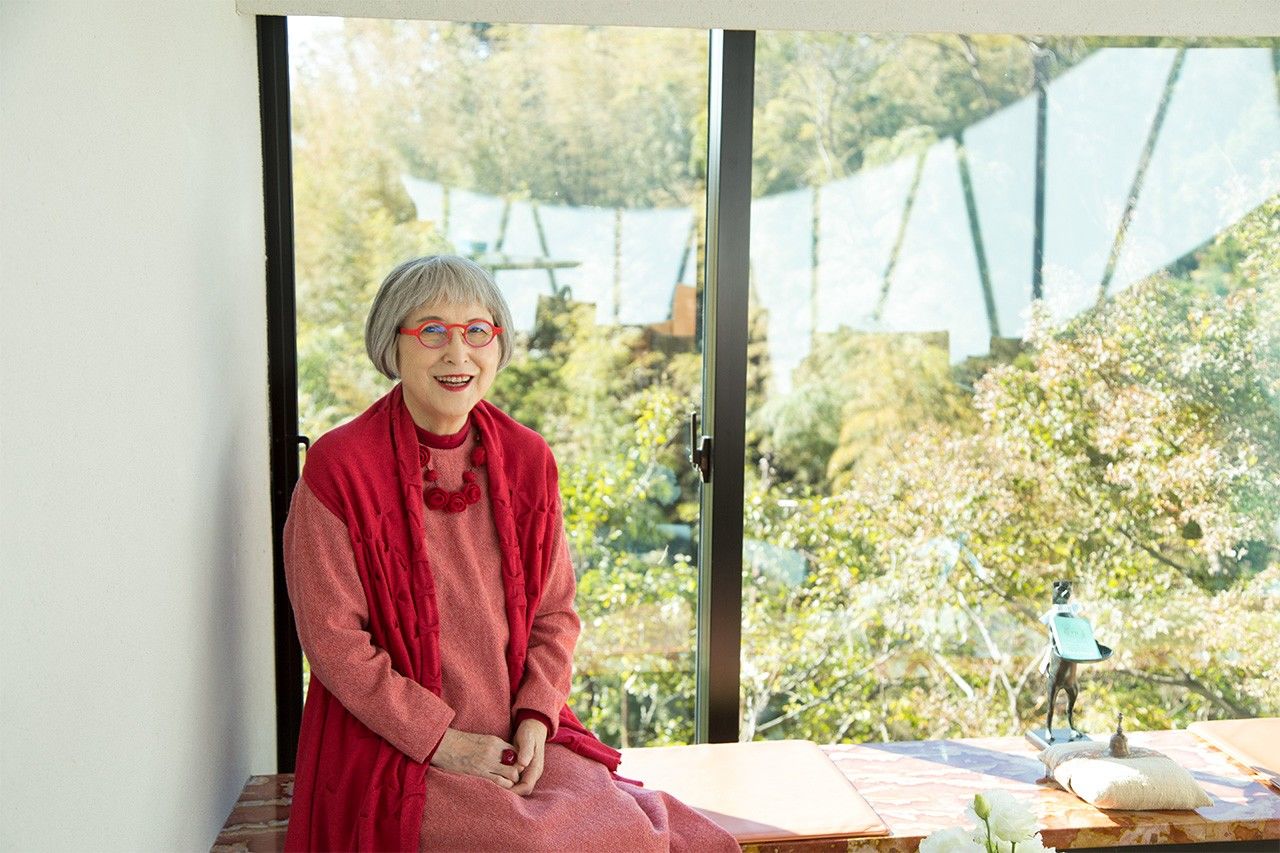
In the House of Flavors café in the hills above Kamakura.
Frequent use of onomatopoeia is one of the characteristics of Kadono’s own writing. The richness of onomatopoeic expressions in Japanese, Kadono speculates, comes from the language’s openness to the sounds of nature and daily life. “Until quite recently, traditional Japanese houses were structured around large pillars. You had a roof, with a big main entrance and windows, then sliding doors between the rooms inside. You’d wake up in the morning and open all the doors, and suddenly the barrier between the natural world outside and the interior of the house would disappear. I think maybe that explains why the language became so sensitive to birdsong, rain, and all the other sounds of daily life.”
Widening Horizons
Kadono was in fifth grade when World War II ended, and in junior high school when she had her first encounter with English, which until then had been regarded as an enemy language. She remembers being struck by the idea of the English “be doing” tense. “It seemed a wonderful way of thinking about life. I decided I wanted to live my life in the present continuous tense and make the most of every moment.”
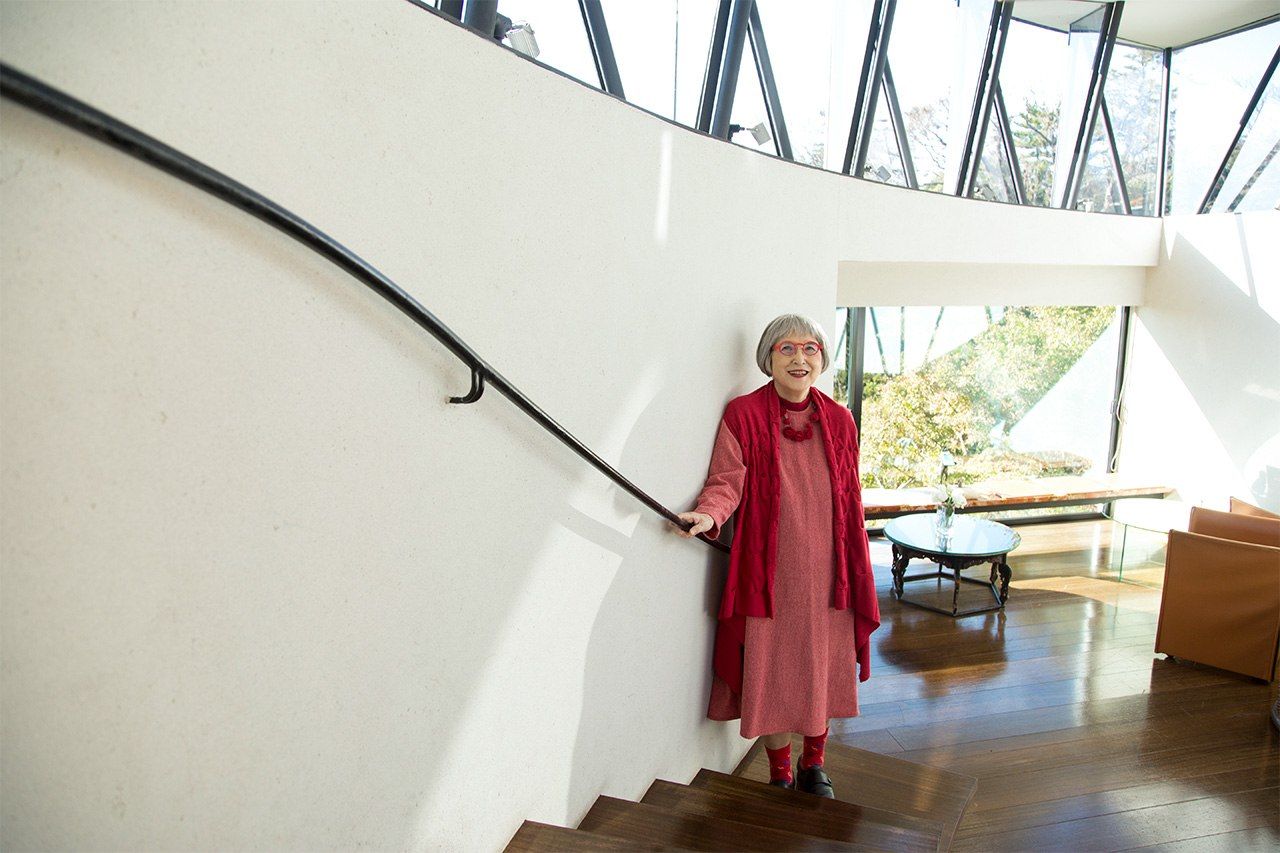
“It’s a bit like a spaceship in here, don’t you think?” Kadono in a Kamakura café.
She majored in English literature in university. After graduation, she joined a publishing firm and got married when she was 23. The next year, she set off with her husband, a designer, for Brazil. In those days, the voyage by sea took two months. She remembers looking out day after day at the endless expanse of ocean and sky, and the thin line of the horizon between them. “I was so excited. It was like when you’re about to open a present.”
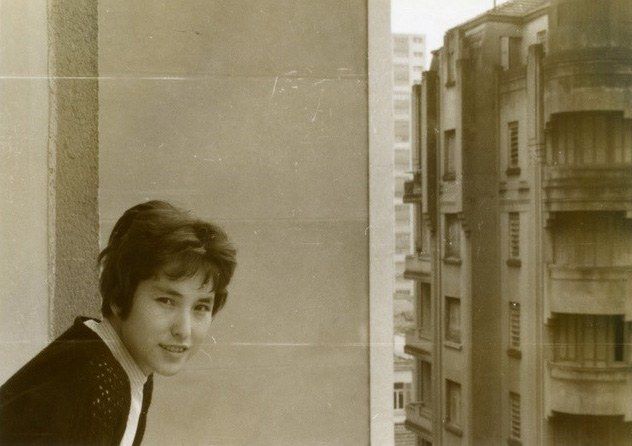
In 1959, Kadono and her husband moved to Brazil. Here she is pictured at Apartment 609, Rua Guaianases, São Paulo.
But Kadono was disappointed when she arrived to find that her English was useless in Brazil. Undaunted, she took to learning Portuguese from a 12-year-old boy who lived in the same apartment, trying to pick up the rhythms of the language as they danced sambas and explored the city together. She found a job and lived in São Paulo for nearly two years before returning to Japan via Europe in 1961.
Discovering a Love of Writing
When she got home to Japan, one her mentors from university days, the English literature scholar Tatsunokuchi Naotarō, suggested she write down an account of her time in Brazil as a children’s book. After several rewrites, her experiences were published the following year as Ruijinnyo shōnen, Burajiru o tazunete (Brazil and My Friend Luizinho). Kadono had made her debut as a writer.
The publication of the book marked a new beginning. She realized for the first time how much she enjoyed writing. “I was the kind of person who could never stick at anything for long, but with writing I found I could keep at it day after day without getting tired of it. Even now, I’m at my desk every day without fail, even when I’m not feeling well.”
Today, we are surrounded by a surfeit of information, in a world where just about anything seems to be available at the tap of a finger. Opportunities to imagine things we can’t see might seem to be fewer than they used to be. How can we help children to discover things they truly love in a world of digital devices and online entertainment? “It’s vital to give children the chance to find things they’re interested in from a young age. That first seed of curiosity is so important. And parents have to do their bit, encouraging children in their interests and inspiring them to explore further. Even if you’re busy and tired with work, you can still present things in positive terms to your children. You should try to pique their curiosity about this interesting and fun thing that adults are doing.
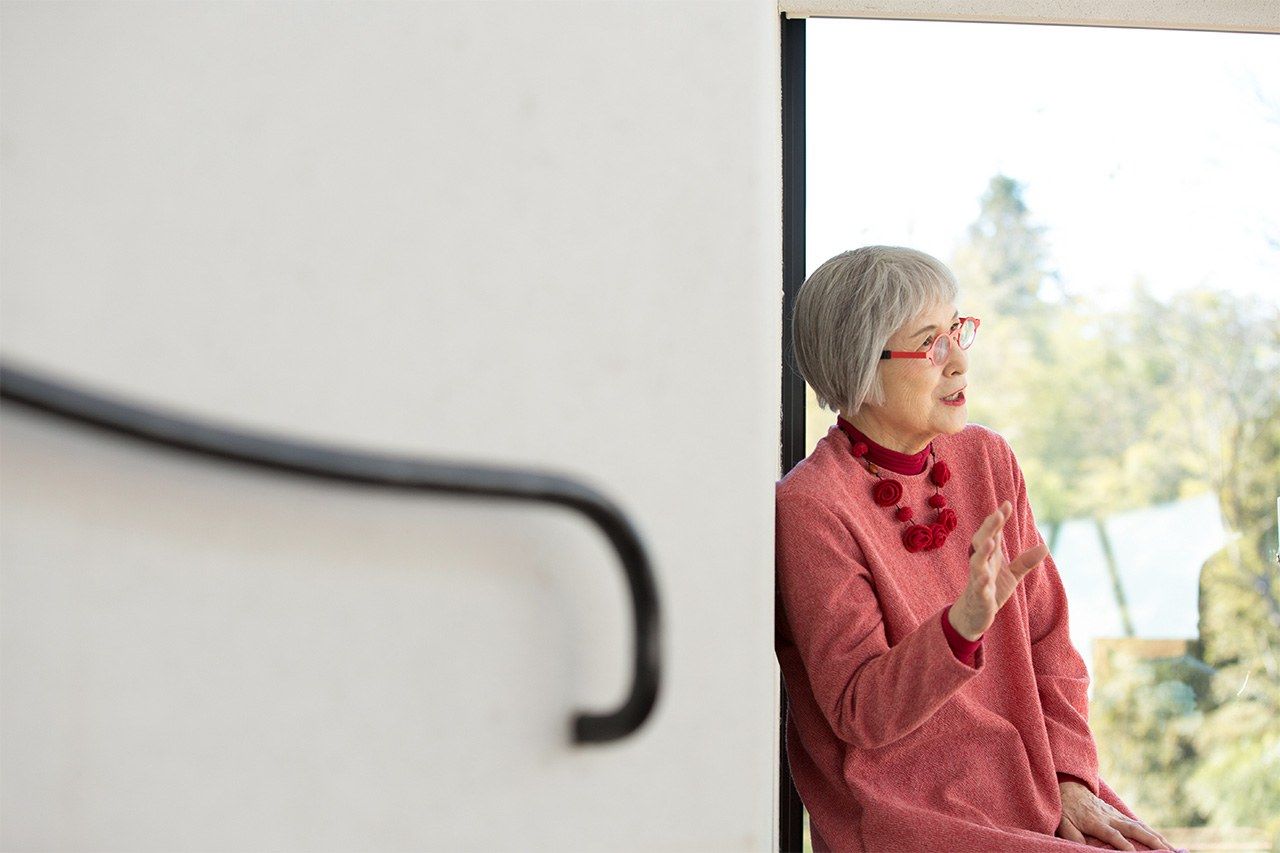
“Children rarely see grownups reading,” sighs the author.
“Parents always want their children to read. But most of the time they are not readers themselves. They might say, ‘Oh, our daughter loves books,’ but in most cases it’s the parents who read to the child, and that’s not the same. There’s a big difference between being read to and reading for yourself. And that’s why those young years are so crucial, the bridge between being read to and learning to read for yourself. It’s vital to nurture that innate sense of curiosity.”
Opening the Door to New Horizons
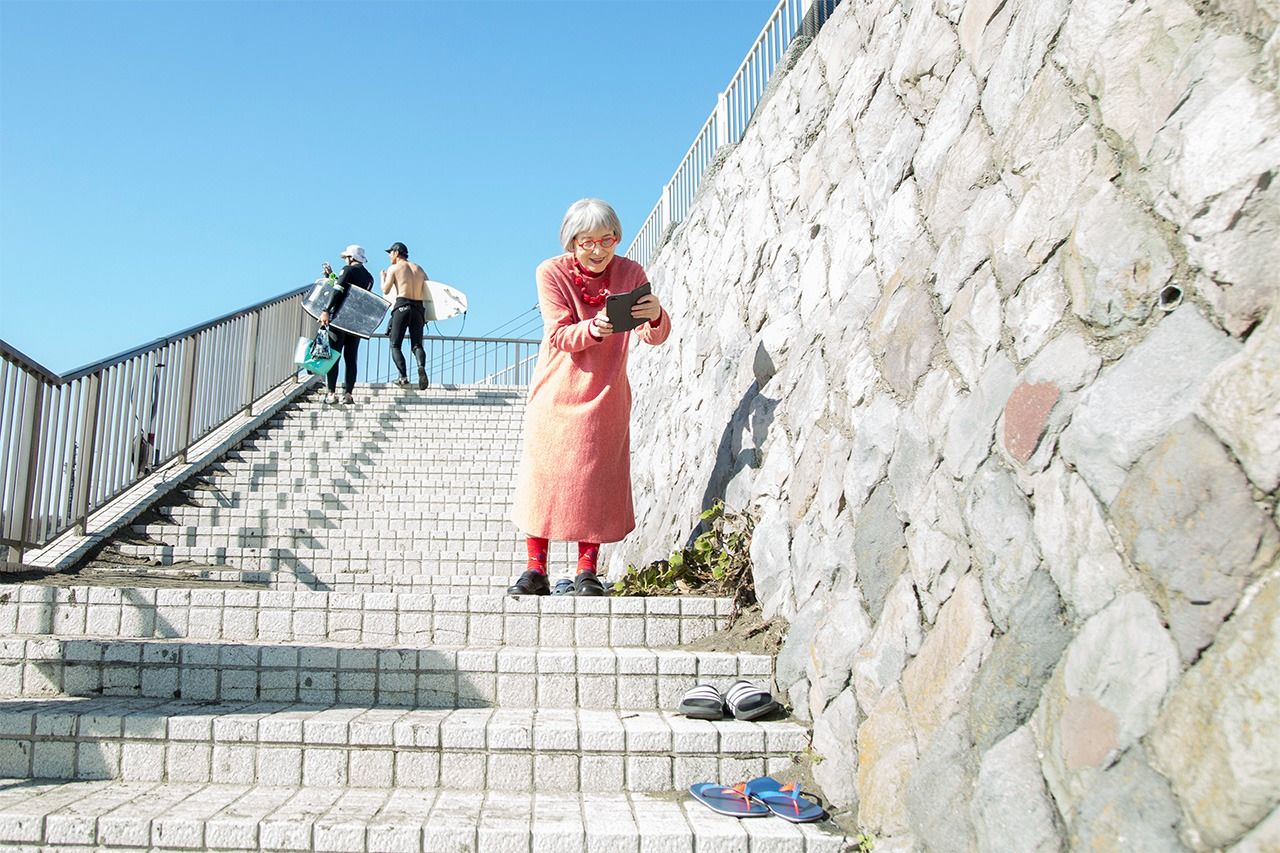
These colorful flip-flops caught Kadono’s attention as we walked down steps to the beach. “Hang on a minute. I want to get a picture of these for my Instagram account.”
As the day moves on, we look out from the beach at Kamakura toward the horizon. For Kadono, the horizon is a place where new things begin. Imagination and curiosity are the nourishment we need to cultivate the powers latent inside us. She encourages her readers to trust their own judgments and feelings. Excitement lead to imagination and the creativity that makes life worth living. Kadono’s own curiosity continues unabated, carrying her forward to new creativity.
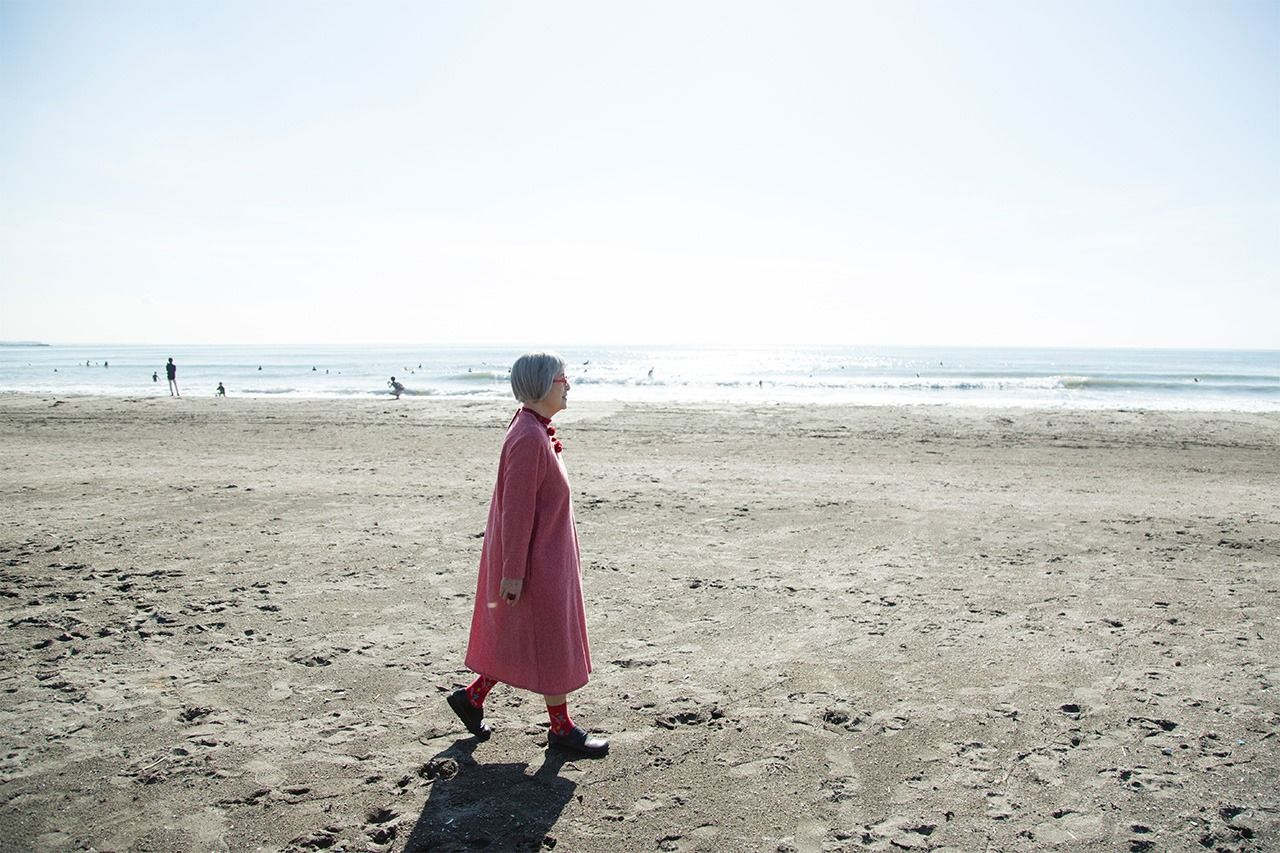
On the beach at Yuigahama near her house in Kamakura.
(Originally written in Japanese. Banner photo: Kadono Eiko at the entrance to the House of Flavors, Kamakura. Photos © Kawamoto Seiya, apart from images provided by Kadono Eiko’s office. With thanks to the House of Flavors café, Kamakura.)
Kadono Eiko
Born in Tokyo on New Year’s Day, 1935. Graduated from Waseda University in 1957 with a degree in English and American literature. Moved to Brazil in 1959 and lived in São Paulo for two years. Began her career as an author around 1970, and has written numerous bestselling picture books and stories for children. Prizes include the Hans Christian Andersen Award for Writing, received in 2018. In total, has written more than 200 works, including the Chiisa na Obake Atchi, Kotchi, Sotchi (Little Ghosts There, Here and Where) series, Zubon senchōsan no hanashi (Tales of an Old Sea Captain), Nāda to iu na no shōjo (A Girl Named Nada), Rasuto ran (Last Run), and Tonneru no mori 1945 (The Tunnel Through the Woods 1945), based on her own experiences as a child during World War II.
literature translation Studio Ghibli Miyazaki Hayao onomatopoeia Kadono Eiko Kiki's Delivery Service the Hans Christian Andersen Award children's story
